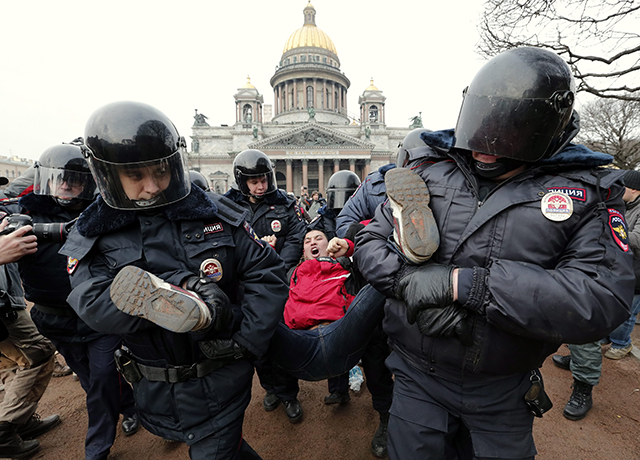Crimea Is a Dangerous Place to Stay If You Support Ukraine
Iryna Fedets /
When hearing current news from Crimea I get a feeling of déjà vu. Activists being abducted and killed; people being afraid to go out on the streets—these scenes remind me of the violence in Kiev just a month ago. During the last days of the former president Yanukovych’s rule, the riot police and thugs were hunting down protesters in the capital of Ukraine, shooting them and kidnapping them wherever they found them—even hospitals. Over 100 people were reported dead and almost 200 are still missing.
Since the beginning of the Russian invasion of Crimea, several people have been captured by the so-called “Crimean special forces” that include Russian troops, pro-Russian militia, and local thugs. Those who make it out, like Andriy Shchekun, the leader of the Euromaidan protests in Simferopol, give vivid accounts of torture and interrogations. Pro-Russian forces in Crimea left Shchrekun with several gun wounds after a week-long interrogation about his protest activity.
The new rulers of the Ukrainian region seem intent on not letting the truth come out. That’s why they are targeting journalists—just like pro-government thugs targeted the press during Euromaidan protests earlier this year. Olena Maksymenko, a reporter for a Ukrainian magazine and alumna of my university in Kiev was captured together with four friends while going to Crimea on March 9th. All of them were released several days later after being searched for cameras and press IDs, questioned, and threatened with guns.
For those who fit the “nationalist” profile—basically anyone who supports Ukrain—Crimea is a now a very dangerous place. But the situation is even more critical for those who live in Crimea: They don’t support the self-proclaimed pro-Russian government but they don’t have anywhere else to go.
Denys, my friend from Simferopol, says it is not safe to display any symbol that could indicate support for Ukraine—a flag or ribbon in national blue and yellow colors, for example. And even before the body of a Crimean Tatar, Reshat Ametov, was found with marks indicative of torture, the local Crimean Tatar community—forcibly deported from Crimea by Stalin in the 1940s—were already expressing concerns about their safety.
Tavrid, a private entrepreneur of Crimean Tatar origin, told me he had closed down his tourism business—people are not going on vacations to the occupied territory, and all the flights have been cancelled except the overpriced ones to Russia. Now that Crimean residents have only a month to apply for a Russian passport, those who wish to remain Ukrainian citizens worry about what Russian occupation will mean for their future.

